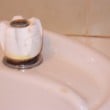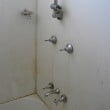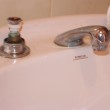B1.3 Water outlets, valves & taps
A house may have twenty taps or valves, including two shower taps, two basin taps, two laundry tub taps, two washing machine taps, two yard taps, a toilet cistern stop tap and cistern valve, two bath taps, two kitchen taps, a hot water system relief valve, stop valve and cold water relief valve and a main house isolation valve. If any of these taps do not work, residents will be less able to carry out the Healthy Living Practices. One dripping tap can waste up to 600 litres of water a day and hot water lost through leaking taps can increase the household energy bill. If many taps are leaking in a community water system, the water supply and waste water systems will be adversely affected. See C1.2 Water quantity and demand management.
Taps should be given careful attention when designing and specifying new works with consideration of the local water quality, easy maintenance and use by people with arthritis or limited mobility. When selecting taps, consider:
- how and where the tap is mounted, for example bench mounted taps are easier to maintain than wall mounted taps and may be easier for people with disabilities to use but bench mounted taps can cause water damage to the bench if not well installed
- the body material, tap ‘bodies’ are commonly made of brass, but plastic and stainless steel bodies may be better when the water has low alkalinity or contains high levels of mineral salts
- whether the tap uses a washer or ceramic disc, washers are cheap and easy to replace and tend to be longer lasting in water that contains sand, grit or other particles (river water) but ceramic disc taps (including mixer taps) are easier for children and people with disabilities to use and can have fewer maintenance requirements if the water is free of particles but has high levels of dissolved mineral salts (above 400 ppm TDS)
- the seat material, stainless steel seats are readily available and last longer than brass seats, particularly when the water has low alkalinity or contains high levels of mineral salts
- the handle type such as capstan, lever handles and mixer taps are easier for people with disabilities to use and plastic handles should be avoided
- the use of flow regulators in poor water quality, which can cause constant maintenance problems
- the prevalence of many types of mixer type may require special tools for tightening fittings that come loose.
Data on the performance of hot and cold water taps in all areas of the house continue to show a 2-4% difference in performance, with hot water taps recording poorer performance than cold water taps due to the impact of the hot water on the washer material. Where washing machine taps are rarely turned off, this gap widens to a 8% gap
Simple changes to tap specification and installation can reduce maintenance, improve performance and enable all residents to easily use the taps.
Design and Specification
Ensure
- B1.3.1.
that all parts of the selected tap, including the handle, flange, seat, spout and pillar, are made of durable materials which are suited to local water conditions
- B1.3.2.
tap ware is standardised for easy maintenance and allows for handles to be changed to capstan or lever handles if required to meet the needs of residents with disabilities
- B1.3.3.
all new and serviced tapware are fitted with high quality washers
- B1.3.4.
in the laundry, taps are positioned at the side of the tub within easy reach for people with disabilities.
- B1.3.5.
penetrations to waterproofing membranes behind shower and bath tapware, bath spouts and shower roses are sealed, using a waterproof membrane, mechanical spindle seal or silicone sealant
Consider
- the benefits of anti-vandal tap handles that are less likely to work loose and fall off the fitting
- using ‘flick mixer’ type taps or lever handles and quarter turn ceramic cartridge taps for people with arthritis or limited strength
- using ceramic cartridge and mixer taps where water does not contain high levels of particulates
- installing flow restrictors to achieve greater water conservation and reduce water costs where water quality is suitable
- installing flow restrictors to houses where water pressure is too high (eg above 500kPa) as high pressure may void warranty of tapware and fixtures and put undue pressure on water supply systems.
- incorporating a service panel to access wall mounted taps for maintenance
- selecting stainless steel seats in areas with poor water quality.
- replacing the washer that comes provided with a new tap with a higher quality washer
Real world examples of Solutions
-
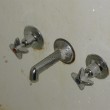 New tap set with fixed handles
New tap set with fixed handles -
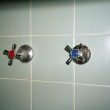 New tap set with spanner fixed handles
New tap set with spanner fixed handles -
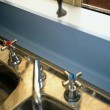 New tap set with spanner fixed handles
New tap set with spanner fixed handles -
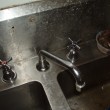 New tap set with fixed handles
New tap set with fixed handles -
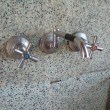 Tap set with handles and buttons screw fixed
Tap set with handles and buttons screw fixed -
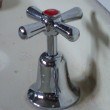 Tap and handle
Tap and handle -
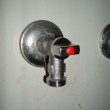 1/4 turn wall stop
1/4 turn wall stop -
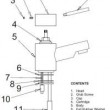 Mixer type taps are becoming more common, are complex and have great variation in quality
Mixer type taps are becoming more common, are complex and have great variation in quality -
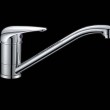 An example of a basin mounted mixer type tap where one handle regulates temperature and water flow
An example of a basin mounted mixer type tap where one handle regulates temperature and water flow -
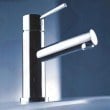 An example of a basin mounted mixer type tap where one handle regulates temperature and water flow
An example of a basin mounted mixer type tap where one handle regulates temperature and water flow
- B1.3.1.
Quality control
- all taps and spouts are secure

- AT HANDOVER
FINAL COMPLETION
- AT HANDOVER
- there is water flow from all taps and spouts and the hot and cold water have been correctly connected to hot and cold taps

- AT HANDOVER
- all taps and spouts are not leaking or dripping

- AT HANDOVER
FINAL COMPLETION
- AT HANDOVER
- spout strainers are free of plumbing waste that could have been flushed through the pipes during construction

- AT HANDOVER
FINAL COMPLETION
TRADE TEST
- AT HANDOVER
- all tap handles are easy to turn on and off

- AT HANDOVER
FINAL COMPLETION
- AT HANDOVER
- if anti-vandal taps have been specified, check that the grub screws have been installed and the handles cannot be removed

- DURING CONSTRUCTION
AT HANDOVER
FINAL COMPLETION
TRADE TEST
- DURING CONSTRUCTION
- a manufacturer's warranty is provided for all taps.

- AT HANDOVER
FINAL COMPLETION
TRADE TEST
- AT HANDOVER
- all taps and spouts are secure
Maintenance
As part of cyclical maintenance:
- check for leaks in all taps and spouts, including yard taps

- Plumber, Local Maintenance Team
- 12 Months
- consider replacing all tap washers regularly to prevent leaks and reduce wear to the tap seat.

- Plumber
- 24 Months
- when upgrading houses, select new taps to suit local water quality and consider standardising taps in all houses for easy maintenance

- Plumber, Housing Management
- 24 Months
- when upgrading houses locate laundry taps at the side of the tub, using capstan or lever handle tap sets with a single outlet

- Plumber, Housing Management
- 24 Months
- check for leaks in all taps and spouts, including yard taps
Standard And References
AS 1428.1:2021 Design for access and mobility - General requirements for access - New building work; Sections 12, 13 and 14
Livable Housing Design Guidelines, 2017, Livable Housing Australia
AS 1428.2-1992 - Design for access and mobility - Enhanced and additional requirements - Buildings and facilities
Bailie, R., Carson, B., McDonald, E. 2004 ‘Water supply and sanitation in remote Indigenous communities – priorities for health development’ in Australian and New Zealand Journal of Public Health, Vol 28, No 5 : 409 - 414
Pholeros, P, Rainow, S & Torzillo, P. 1993 Housing for Health, Towards a Healthy Living Environment for Aboriginal Australia, Healthabitat, Newport Beach.

